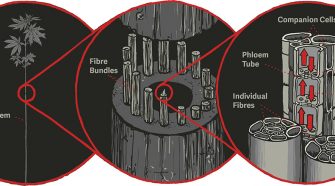Raw Materials

Annealer roller shaft seal optimization
In the after-treatment line of polyester staple fiber production, although the fiber strength after drawing is high, because of the large internal stress, the fiber shrinks under the heat action, …

BastCore bets big on hemp
Hemp has a long history as a raw material for American industry. Jamestown settlers introduced hemp to colonial America in the early 1600s for rope, paper, and other fiber-based products; …

Cellulose and cellulose-blend fibers derived by HighPerCell technology
Global fiber production in 2019 was 111 million tonnes. This figure has more than doubled over the past 20 years and is expected to increase by another 30% to 146 …

Looking back to go forward – natural fiber innovation, 30,000 years in the making
Not too long ago, deep in a cave in the Eurasian country of Georgia, archaeologists unearthed the world’s oldest textile fibers – flax (linen) fibers dating back 30,000 years or …

Elastane materials expand with ‘responsible’ stretch
Although not all fabrics need elastane to be stretchable, innovative and more sustainable alternatives are now available on the market Elastane – spandex or Lycra to many people – is …

